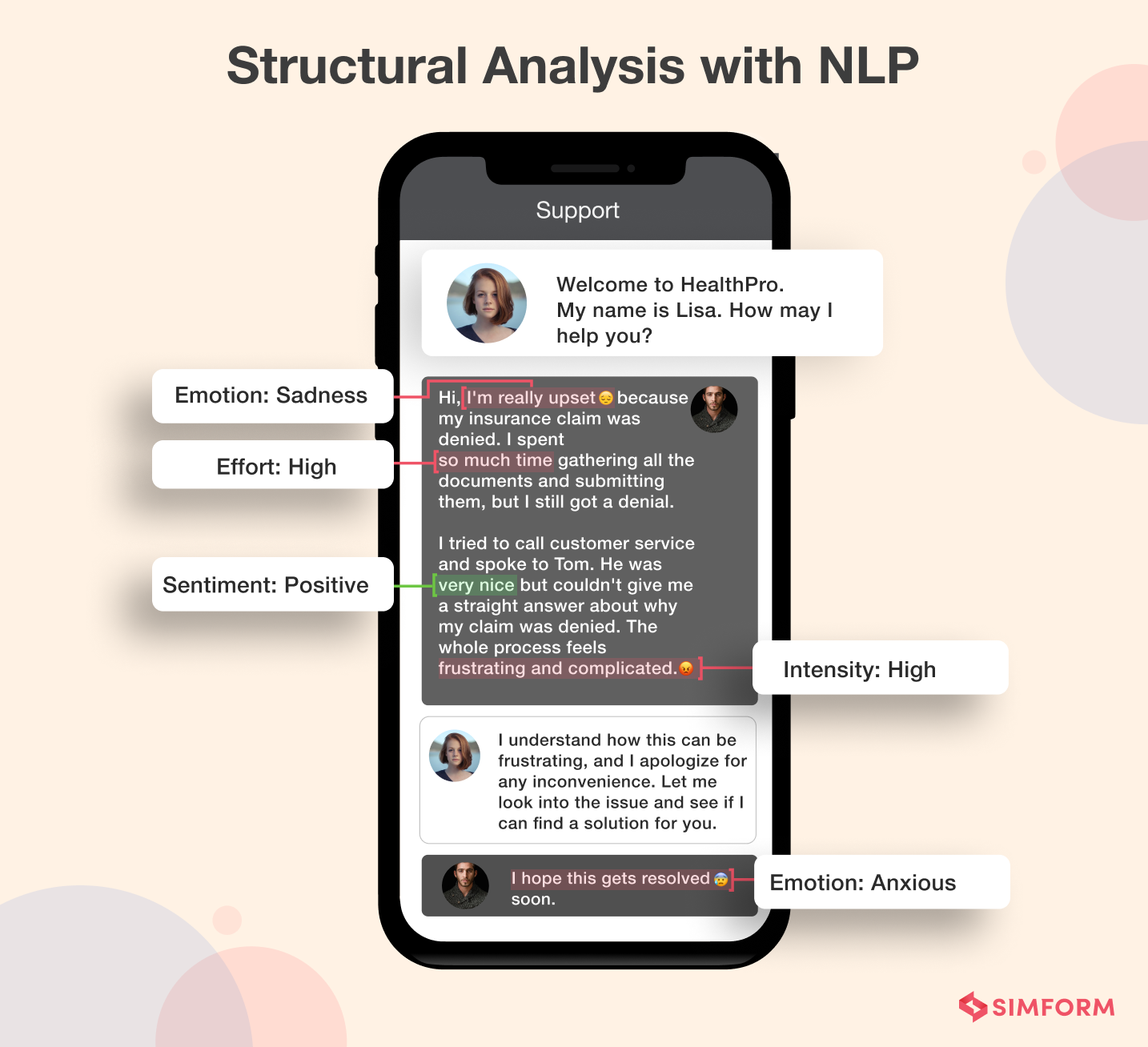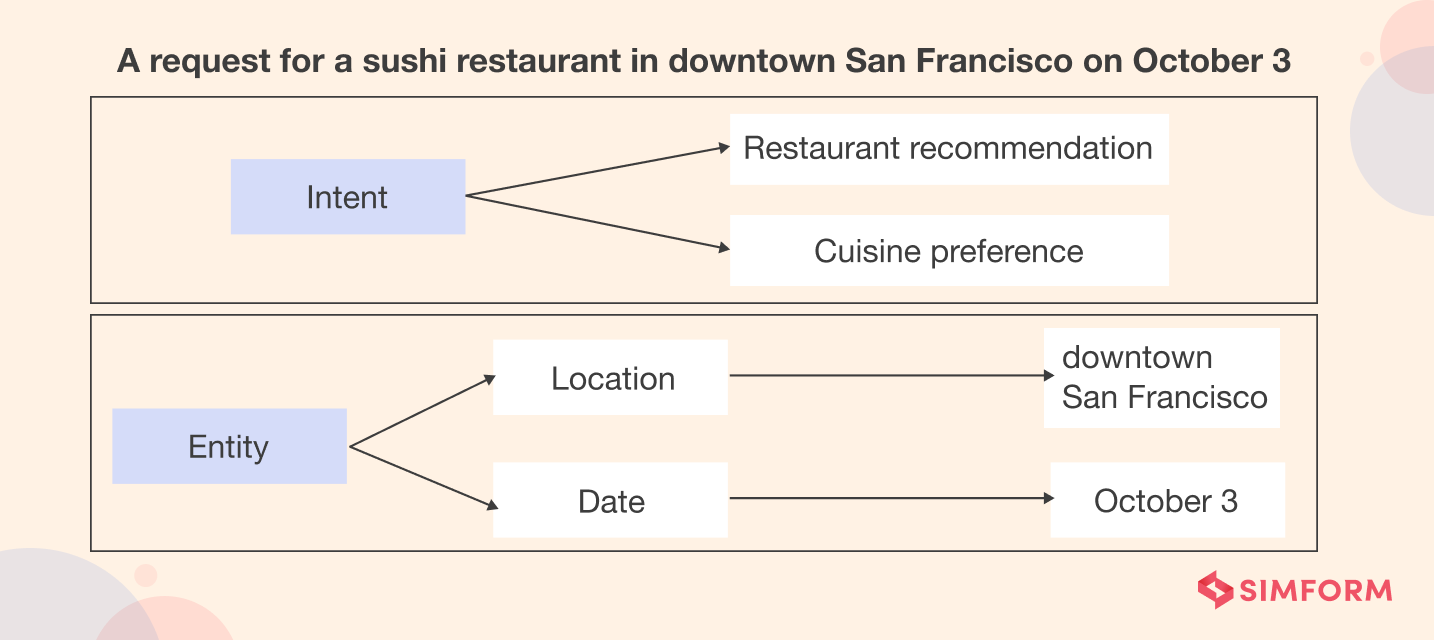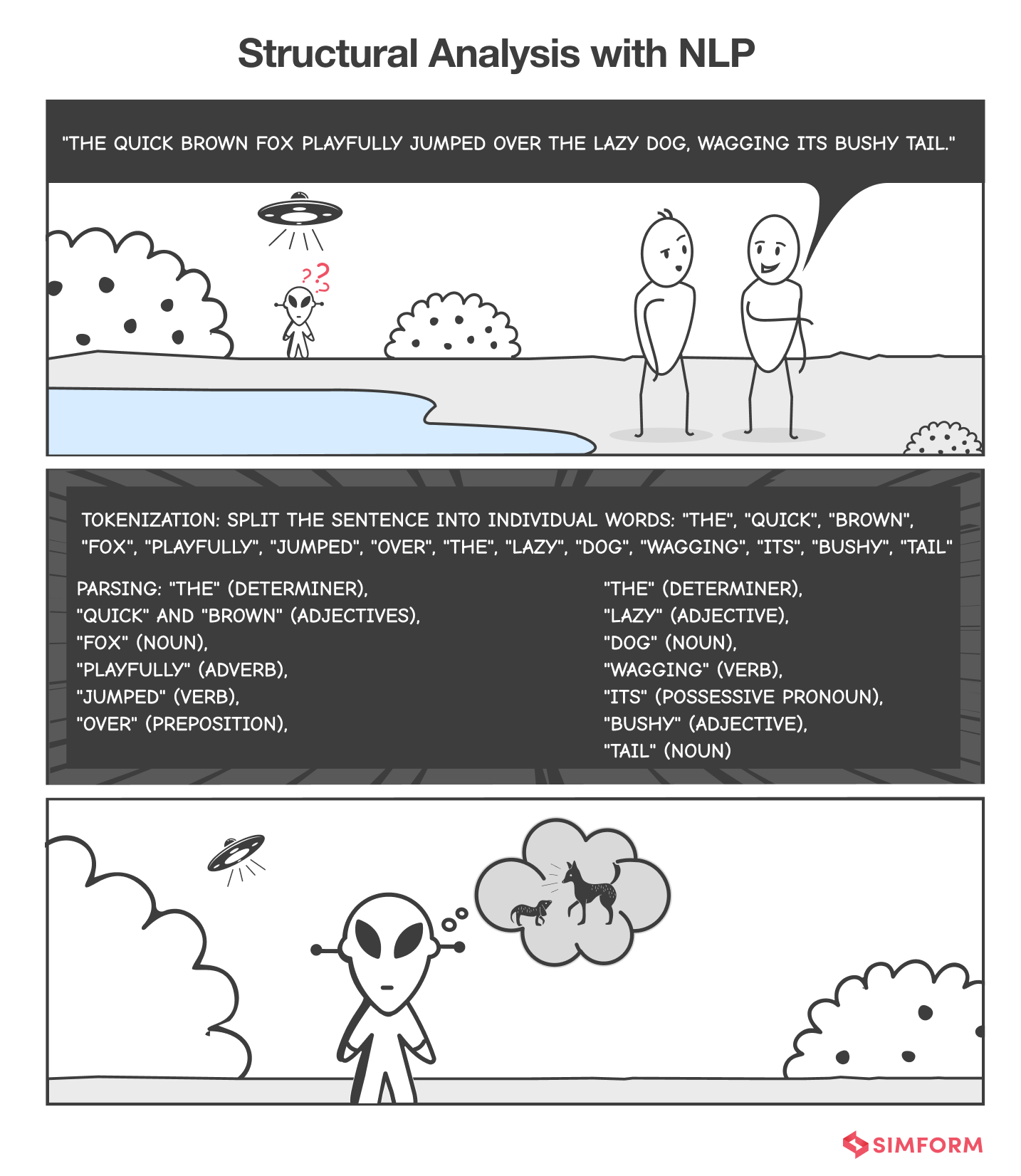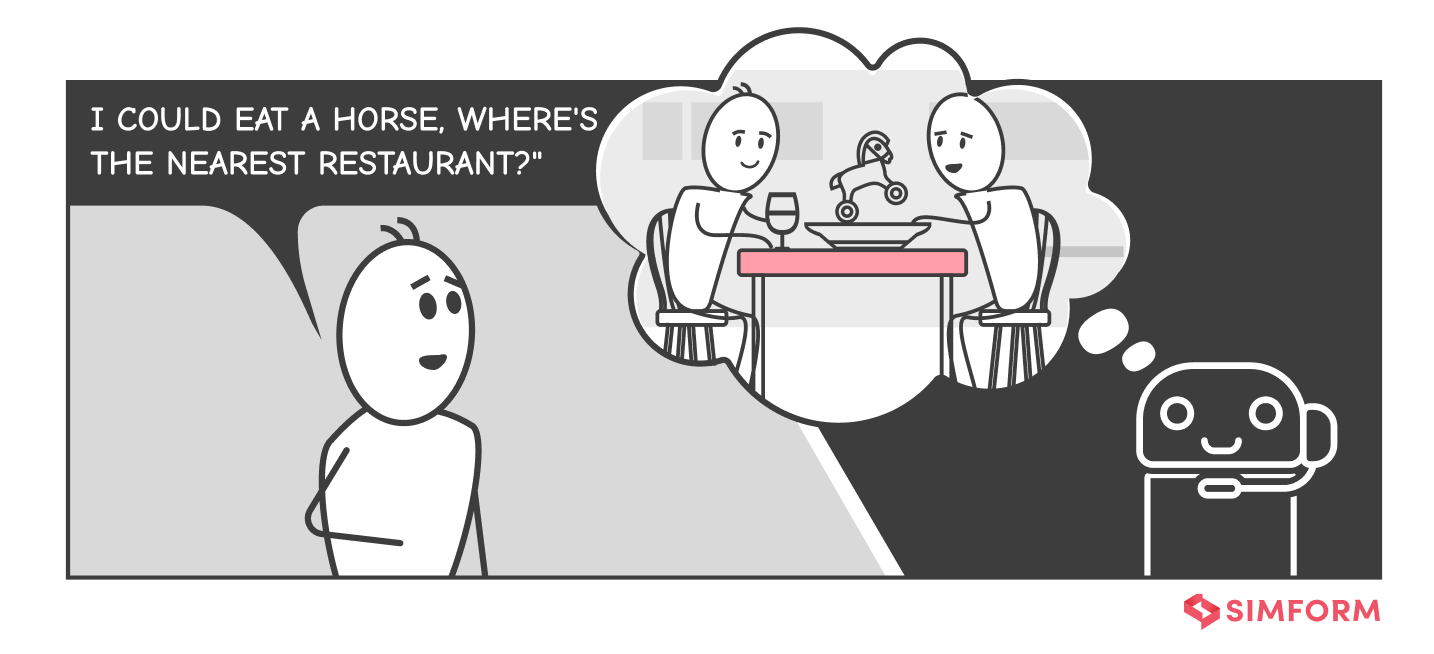Picture a group of interns working at an insurance company, law firm, or hospital, processing thousands of sensitive documents every day. But making mistakes and accidentally sharing private data! Now what if they had a language robot called “NLP” that automatically redacts personally identifiable information and protects sensitive data!?
While NLP is great for identifying and manipulating the structure of language, it needs NLU (a subset of NLP) to understand the meaning behind words. By incorporating NLU into their document processing, the interns can improve the accuracy of their retrievals. They no longer have to worry about getting fired for leaking confidential information – unless they spill coffee on the robot’s control panel!
The global market for NLP is expected to hit USD 127.26 billion in 2028, highlighting the need to understand the nuanced differences between NLU and NLP.
In this article, we’ll delve into the fascinating world of NLU and NLP, exploring their definitions, principles, and key distinctions.
We’ll also examine when prioritizing one capability over the other is more beneficial for businesses depending on specific use cases. By the end, you’ll have the knowledge to understand which AI solutions can cater to your organization’s unique requirements.
Defining the language landscape
From deciphering speech to reading text, our brains work tirelessly to understand and make sense of the world around us. However, our ability to process information is limited to what we already know. Similarly, machine learning involves interpreting information to create knowledge. Understanding NLP is the first step toward exploring the frontiers of language-based AI and ML.
What is Natural Language Processing?
Natural Language Processing, a fascinating subfield of computer science and artificial intelligence, enables computers to understand and interpret human language as effortlessly as you decipher the words in this sentence.
Imagine planning a vacation to Paris and asking your voice assistant, “What’s the weather like in Paris?” With NLP, the assistant can effortlessly distinguish between Paris, France, and Paris Hilton, providing you with an accurate weather forecast for the city of love.
This magic trick is achieved through a combination of NLP techniques such as named entity recognition, tokenization, and part-of-speech tagging, which help the machine identify and analyze the context and relationships within the text.
But it’s not just about impressing holidaymakers; natural language processing has far-reaching implications for businesses and organizations across various industries, from enhancing customer service through chatbots to revolutionizing healthcare and education. The integration of NLP algorithms into data science workflows has opened up new opportunities for data-driven decision making.
However, the full potential of NLP cannot be realized without the support of NLU. And so, understanding NLU is the second step toward enhancing the accuracy and efficiency of your speech recognition and language translation systems.
What is Natural Language Understanding?
Natural language understanding is a sub-field of NLP that enables computers to grasp and interpret human language in all its complexity. While NLP turns words into actions, NLU creates order out of chaos.
Suppose you ask your virtual assistant, “What’s the weather like for my beach trip tomorrow?” Instead of merely providing the weather forecast, it understands your underlying intention and responds, “The weather is perfect for the beach tomorrow, but don’t forget your sunscreen!”
Unlike traditional computer languages that rely on syntax, NLU enables computers to comprehend the meaning and context of words and phrases in natural language text, including their emotional connotations, to provide accurate responses.

Capabilities NLU technology should have: Multiple language support, in-depth analysis, rapid interpretation and response, ease of usability and integration options, and automated actions.
How language technologies work: A closer look
Knowing the inner workings of these technologies allows us to appreciate their capabilities and limitations and use them to their fullest potential. And, of course, to understand how they differ!
How does natural language processing work?
Behind the scenes, sophisticated algorithms like hidden Markov chains, recurrent neural networks, n-grams, decision trees, naive bayes, etc. work in harmony to make it all possible.
- Markov models in speech and translation – Markov models help machines understand words based on their context. They are useful in speech recognition and choosing the best translation for phrases. By considering the surrounding words, Markov models improve the accuracy and fluency of language processing.
- Recurrent neural networks for text sequences – Recurrent neural networks process words one by one instead of all at once. They are good at understanding sentences and predicting conversations. By handling varying sentence lengths, RNNs can adapt to diverse language patterns and structures.
- Using n-grams in language processing – n-grams are groups of words found next to each other in a text. They help machines predict and evaluate responses in applications like spelling correction and machine translation. By analyzing the probabilities of word sequences, n-grams contribute to generating coherent and contextually appropriate text.
Together, these algorithms form the foundation of NLP, ensuring machines can efficiently process and comprehend human language. NLP processes can be broken down into the following steps:
1. Lexical analysis: NLP starts by breaking down the text into paragraphs, sentences, and words to identify and analyze the structure of words in a language.
2. Syntactic analysis: This step checks grammar and arranges words to reflect their relationships, ensuring that the sentence structure is correct.
3. Semantic analysis: NLP extracts the exact or dictionary meaning from text, ensuring content is meaningful by mapping syntactic structures to task domain objects.
4. Discourse integration: NLP considers the meaning of previous and following sentences to provide context and better understand the meaning of the current sentence.
5. Pragmatic analysis: This final step involves reinterpreting the text based on real-world knowledge, deriving aspects of language that require understanding beyond literal meaning.
How natural language understanding works?
Going beyond speech recognition, NLU employs machine learning models that improve over time. These models identify language patterns, syntax, context, unique definitions, sentiment, and intent.
NLU analyzes data using algorithms to determine its meaning and reduce human speech into a structured ontology consisting of semantic and pragmatic definitions. Structured data is important for efficiently storing, organizing, and analyzing information.
Two fundamental concepts of NLU are intent recognition and entity recognition.
- Intent recognition identifies the user’s sentiment in the input text and determines their objective, establishing the meaning of the text.
- Entity recognition focuses on identifying entities in a message and extracting crucial information about them. Entities can be named (people, companies, locations) or numeric (numbers, currencies, percentages).

Ultimately, we can say that natural language understanding works by employing algorithms and machine learning models to analyze, interpret, and understand human language through entity and intent recognition. This technology brings us closer to a future where machines can truly understand and interact with us on a deeper level.
Natural Language Generation (NLG): The vital component of NLP
In addition to natural language understanding, natural language generation is another crucial part of NLP. While NLU is responsible for interpreting human language, NLG focuses on generating human-like language from structured and unstructured data.
Together, NLU and natural language generation enable NLP to function effectively, providing a comprehensive language processing solution.
The algorithms we mentioned earlier contribute to the functioning of natural language generation, enabling it to create coherent and contextually relevant text or speech.
A key difference between NLP and NLU: Syntax and semantics
People can express the same idea in different ways, but sometimes they make mistakes when speaking or writing. They could use the wrong words, write sentences that don’t make sense, or misspell or mispronounce words. NLP can study language and speech to do many things, but it can’t always understand what someone intends to say. NLU enables computers to understand what someone meant, even if they didn’t say it perfectly.
The fascinating world of human communication is built on the intricate relationship between syntax and semantics. While syntax focuses on the rules governing language structure, semantics delves into the meaning behind words and sentences. In the realm of artificial intelligence, NLU and NLP bring these concepts to life.
NLP and the structural analysis of language
Natural language processing primarily focuses on syntax, which deals with the structure and organization of language. NLP techniques such as tokenization, stemming, and parsing are employed to break down sentences into their constituent parts, like words and phrases. This process enables the extraction of valuable information from the text and allows for a more in-depth analysis of linguistic patterns. For example, NLP can identify noun phrases, verb phrases, and other grammatical structures in sentences.

Intention recognition with NLU
On the other hand, natural language understanding is concerned with semantics – the study of meaning in language. NLU techniques such as sentiment analysis and sarcasm detection allow machines to decipher the true meaning of a sentence, even when it is obscured by idiomatic expressions or ambiguous phrasing.
For example, when processing the sentence:
“I could eat a horse, where’s the nearest restaurant?”
NLP may interpret the phrase “eat a horse” literally and suggest a restaurant that serves horse meat.

NLU, however, understands the idiom and interprets the user’s intent as being hungry and searching for a nearby restaurant.
NLU vs NLP
To have a clear understanding of these crucial language processing concepts, let’s explore the differences between NLU and NLP by examining their scope, purpose, applicability, and more.
|
Aspect |
NLU |
NLP |
|
Scope |
Narrow concept |
Wider concept |
Perspective |
Focuses on what was meant |
Focuses on what was said |
Purpose |
Enables computers to understand instructions provided in human languages |
Aims to make machines understand, process, and generate human language comprehensively |
Applicability |
Good for understanding text |
Useful for understanding, decision-making, and response generation |
Phases/Stages |
Paraphrasing, text conversion to other languages, drawing inferences |
Lexical analysis, syntax analysis, semantic analysis, disclosure integration, pragmatic analysis |
Data Processing |
Converts unstructured data to structured or meaningful information |
Converts instructions from natural language to computer language and returns information in natural language after processing |
Translation |
Performs transcreation, rewriting input text for multilingual understanding |
Performs word-for-word translation |
Language technologies in action: NLU vs NLP applications
Across various industries and applications, NLP and NLU showcase their unique capabilities in transforming the way we interact with machines. By understanding their distinct strengths and limitations, businesses can leverage these technologies to streamline processes, enhance customer experiences, and unlock new opportunities for growth and innovation.
While NLU is a subset of NLP, NLP doesn’t necessarily involve NLU. Natural language processing is generally more suitable for tasks involving data extraction, text summarization, and machine translation, among others. Meanwhile, NLU excels in areas like sentiment analysis, sarcasm detection, and intent classification, allowing for a deeper understanding of user input and emotions.
|
NLP Applications |
Automatic text summarizer |
Generates concise summaries of input text, discarding irrelevant points |
|
Text classification |
Categorizes journals or news stories based on their domain, including spam detection in emails |
|
|
Information extraction |
Proposes automated actions, like adding events to calendars, based on text content |
|
|
Translation |
Converts text from one language to another through word-by-word translation for simple phrases |
|
|
NLU Applications |
Voicebot comprehension |
Interprets user intent and identifies key conversation elements in voicebots |
|
Question answering & semantic parsing |
Empowers machines to respond to questions using natural language |
|
|
Sentiment analysis & emotion detection |
Detects emotional undertones in opinions and contexts |
|
|
Transcreation |
Preserve the original message and intention of a sentence in the target language by adjusting phrases or reinterpretations as needed |
|
|
Common Use Cases of NLP and NLU |
Speech recognition |
Interprets human speech for voice assistants like Siri and Alexa |
|
Machine translation |
Converts text between languages, such as Google Translate |
|
|
Chatbots |
Enables natural and intuitive interactions between users and software |
Power of collaboration: NLP and NLU working together
NLP and NLU have unique strengths and applications as mentioned above, but their true power lies in their combined use. Integrating both technologies allows AI systems to process and understand natural language more accurately.
For instance, a simple chatbot can be developed using NLP without the need for NLU. However, for a more intelligent and contextually-aware assistant capable of sophisticated, natural-sounding conversations, natural language understanding becomes essential. It enables the assistant to grasp the intent behind each user utterance, ensuring proper understanding and appropriate responses.
By combining their strengths, businesses can create more human-like interactions and deliver personalized experiences that cater to their customers’ diverse needs. This integration of language technologies is driving innovation and improving user experiences across various industries.
Embracing the future of language processing and understanding
We’ve seen that NLP primarily deals with analyzing the language’s structure and form, focusing on aspects like grammar, word formation, and punctuation. On the other hand, NLU is concerned with comprehending the deeper meaning and intention behind the language.
As we continue to advance in the realms of artificial intelligence and machine learning, the importance of NLP and NLU will only grow. However, navigating the complexities of natural language processing and natural language understanding can be a challenging task. This is where Simform’s expertise in AI and machine learning development services can help you overcome those challenges and leverage cutting-edge language processing technologies.
So, don’t get left behind – embrace the power of NLP and NLU today!